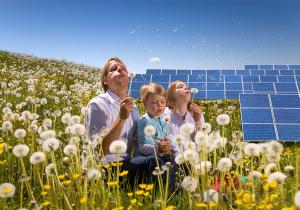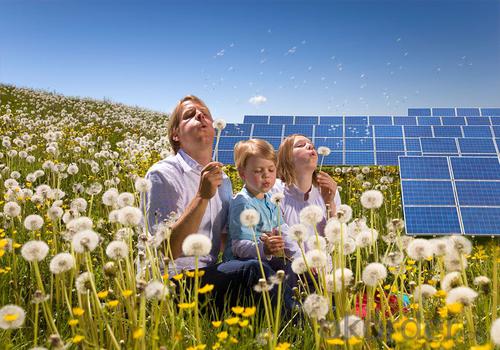Enclosed Trailer Solar Panels - 255W Silicon Polycrystalline Solar Panel
- Loading Port:
- Nanjing
- Payment Terms:
- TT OR LC
- Min Order Qty:
- 200000 watt
- Supply Capability:
- 20000000 watt/month
OKorder Service Pledge
OKorder Financial Service
You Might Also Like
About us
We are a high-tech group wich specializes in solar products design,research, manufacture, sales,solar projects design and installation.
Our national sales service covers seven parts, including northeast, north, east, middle, south, northwest and southwest, international sales covers five continents and over forty countries, including Germany, Italy, Spain, France, America and Brazil etc.
Our present annual capacity is 6 million for wafer, 60MWp for solar cells,200MWp for solar modules and one hundred thousand for solar applications. It is expected that the annual capacity of 2012 will be up to 30 million for wafer, 300MWp for solar cells, 1000MW for solar modules and 2 million for solar applications.
We now provide Polycrystalline Silicon Solar Module;Thin Film Solar Module;Monocrystalline Silicon Solar Module
Feature of our product
High conversion efficiency mono/poly-crystalline amorphous silicon solar cells
Modules incorporate high performance bypass diodes to minimize the power drop caused by shading
High transmittance, low-iron tempered glass
High performance EVA resin to prevent destroying and water.
AI frame: without screw, corner connection. 8 holes on the frame can be installed easily
Good performance of preventing from atrocious weather such as wind and hails
Certifications: CE IEC TUV VDE, Class I
10 years 90% output warranty
25 years 80% output warranty
Depends on various demands from different customers, CNBM could supply any kinds of service to meet you, please feel free to contact us at any time.
FAQ:
1. How long will my inquiry get response?
Your inquiry related to our products or prices will be replied within 24 hours.
2. Can I get professional service and suggestion?
Well-trained and experienced staffs to answer all your questions in fluent English.
3. Do you accept OEM or customized design?
OEM & ODM, any your customized lightings we can help you to design and put into product.
4. What if I need specific design?
Distributorship are offered for your unique design and some our current models.
Data sheet
| Maximum Power | 255W |
| Efficiency | 0.157 |
| Backsheet | Silver |
| Frame Color | White |
| Manufacture Site | China |
| Frame | Anodized Aluminum Alloy |
| Weight | 19kg |

- Q: During the summer my house uses about .47 kw/h I am wondering what solar panel do I need to cover most or all the electric bill. A link would be helpful too :)
- If okorder If you have a fair chunk of money to drop on a standing seam steel roof, check out who Powerfilm has as their preferred installers for their roofing panels.
- Q: What are the different applications for solar panels for residential use? How many should I purchase if the avg panel produces 80 watts .
- For a starter you would look at how many watts you use. And how deep in you want to go. 80 watts at 2volts dc is nice.. But getting it to 20 ac. You will need a good inverter, battery's. There is things that you can replace in your house that will run on 2 volts. Lights fans. But to answer your question you would first have to look at what you use or and what you want to change over. I have got 900 watts of panels and 2700 Amp hours of battery's on one system. That will run all my lights computers and TVs Also on this I have converted a ups for the 20 VAC. I have been working on this for 0 plus years with no plans to finish. ( there is no end for what you can do with the power of the sun)
- Q: Is there a cheaper way on how to make your own solar panels ? Can someone share their real life experience ? Thank you.
- If okorder / . Beware of anyone who makes claims you can save tons of money by making your own panels. Those are scams. It's possible to save money with solar, but not with homemade panels.
- Q: Do solar panels require cleaning?
- Yes, solar panels do require cleaning. Over time, dust, dirt, leaves, bird droppings, and other debris can accumulate on the surface of solar panels, reducing their efficiency. Regular cleaning is recommended to ensure optimal performance and maximize energy generation.
- Q: So lets say that Everyday I use ,280 kWh. How many 250 watt solar panels would I buy so that I don't need to buy electricity anymore. Sorry if this sounds stupid, I am doing research on why american homes should become more cost efficient.
- Everyday I use ,280 kWh 280 kW-hour / 24 hours = 470 kW WOW, that is a very high power level, most homes use an average of .2 kW. My guess is that you mean you use 280 kW-hour in a year, which comes to an average power of .3 kW, typical. Assuming you get, worse case, 6 hours of sun per day, for the first case, 470 kW, each solar panel generates the equivalent of 250 x6/24 = 60 watts, so you would need 470k/60 = 8000 panels For the second case, .3 kw or 300 watts, divided by 60 that is about 20 panels. Depending on where you live, you could need as much as twice that number. Plus you need charge controller, lots of expensive batteries, and an inverter. The big problem is periods of no sun. If you demand continuous power, and you have a period of, say, 24 hours with no sun because of storms, etc, then the number of batteries increases to the hundreds.
- Q: I'm doing a project for school where I will buy a solar panel and utilize/improve the power output of the panel. I want the panel to have an improved amount of energy output compared to the original. My budget for the solar panel itself is ~$00. Anything else that will be needed is covered.Also, I will be comparing the power by lighting a light bulb and checking to see the output energy of the panel.Where or how should I approach this project?What are the parts of the solar panel that I will need to buy?What factors could I change/improve to improve the overall energy output?What are the things (other than the panel) that I will need to buy?How can I attach a light bulb to the solar panel?
- when you're in Malaysia, i'm no longer effective why you desire a heater, except perhaps a water heater. For that, use a photo voltaic heater right away. For the electrical energy, the most value-efficient thanks to do that's to stay linked to the grid, and offset your bill with photo voltaic. That way, you do not favor to oversize the photo voltaic for contingencies. there'll be compromise on your way of existence, each and every thing that plugs into the wall today will nevertheless plug into the wall and artwork advantageous.
- Q: I have thermal solar panels on my roof. Iive in Colorado
- If it is your own installation, you simply reverse the method of your own installation. If your sunlight panel is set up by using a vendor or a contractor, you need to speak to them for the cost of removing your thermal sunlight panel.
- Q: How do solar panels affect the roof warranty?
- Solar panels generally do not void a roof warranty, but they may have some impact on it. The installation process of solar panels involves drilling holes in the roof, which can potentially cause leaks if not done properly. Therefore, it is important to hire a reputable installer who is experienced in working with solar panels and understands the intricacies of a roof. Some roofing manufacturers may require specific mounting systems to be used, and failure to comply with these requirements may void the warranty. It is advisable to consult with both the solar installer and the roofing manufacturer to understand any potential impact on the roof warranty before installing solar panels.
- Q: how to use a motor with solar panel
- A solar panel cannot operate a motor by itself. A typical system operates like this: The solar panel is connected to a charge controller which is connected to a battery which is connected to a motor controller which is connected to the motor. All these components must be compatible with each other. So,in other words, you can't run just any old motor with a solar panel.You can buy a system like an electric gate opener which is solar powered.
- Q: Are there any risks associated with solar panel installation?
- Yes, there are a few risks associated with solar panel installation. These include the potential for damage to the roof during installation, the risk of electrical shock if not installed properly, and the possibility of fire hazards if the electrical system is not correctly designed or maintained. However, by hiring professional installers and following safety guidelines, these risks can be minimized.
Send your message to us
Enclosed Trailer Solar Panels - 255W Silicon Polycrystalline Solar Panel
- Loading Port:
- Nanjing
- Payment Terms:
- TT OR LC
- Min Order Qty:
- 200000 watt
- Supply Capability:
- 20000000 watt/month
OKorder Service Pledge
OKorder Financial Service
Similar products
Hot products
Hot Searches
Related keywords




























